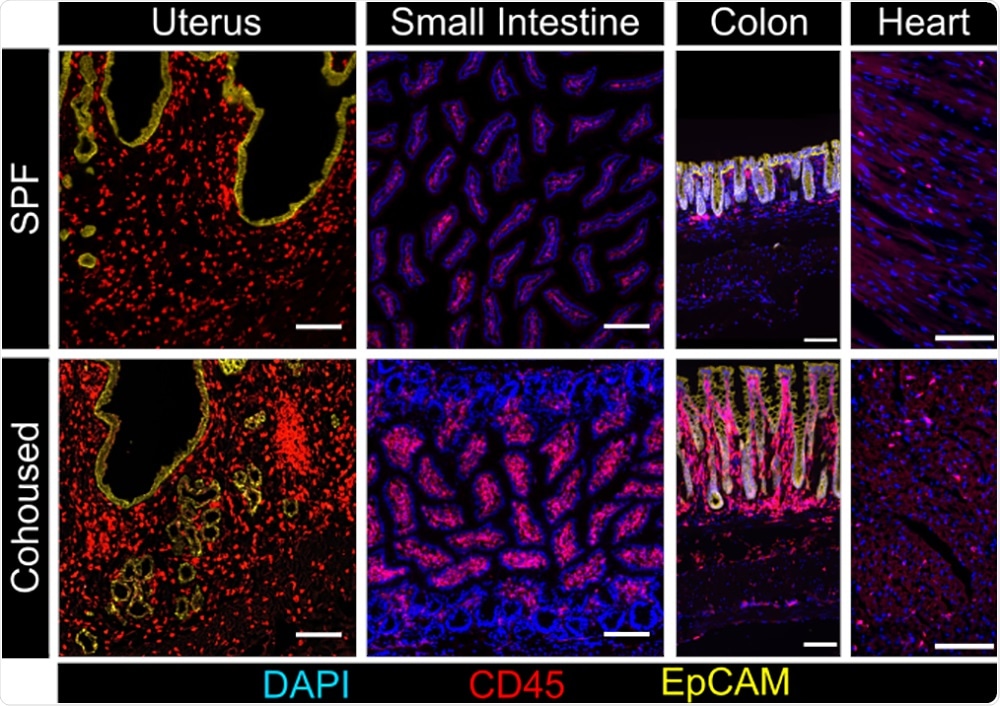Scientists from the University of Minnesota Medical School have discovered new methods to interpret the immune system, as part of a new study reported in the Nature journal.

Cohousing specific-pathogen-free mice with pet shop mice reveals an expansion of tissue immunities in response to human-like microbial experience. Image Credit: University of Minnesota Medical School.
The study shows that organ tissues turn highly immune throughout life and might start to change the basic concepts related to the rules of vaccination and the function of the immune system inside the body.
The lead author of the study, which focuses on T cell immunity, is Saythi Wijeyesinghe, Ph.D., a researcher in the Masopust Lab at the U of M Medical School. He started the study with the aim of gaining insights into the lifespan of T cells in organ tissues, which are known to combat viruses while also safeguarding from reinfection by the same virus.
Historically, studies of the immune system have emphasized its renewable nature through bone marrow, lymphoid organs and blood. Our work shows how much this model fails to account for the many immune cells distributed throughout other organs of the body, where most infections and tumors arise.”
Saythi Wijeyesinghe, Researcher, Masopust Lab, University of Minnesota Medical School
“What we found ends up painting a much broader picture of how the immune system accomplishes surveillance of the entire body for pathogens, tissue damage, and tumors,” added Wijeyesinghe.
The key findings of the study are as follows:
- Antiviral T cells found in a majority of organs within the body persist over time and even during extensive infectious exposures.
- In contrast to other organ systems, the immune system turns highly immune throughout life—a natural response to accumulated microbial exposures over time.
- In organs, up to 25% of the cells were immune cells, suggesting that the immune system considerably contributes to the cellular composition of the body.
- Together with antiviral T cells, most other immune cells are tissue-resident persistently in organs as well.
Wijeyesinghe believes this research can further boost the current change in how the broader scientific community visualizes the immune system and immune homeostasis.
While performing this study, Wijeyesinghe also accidentally found how tissue-resident T cells may act as the source for memory T cells in the blood. As a further step in this study, the Masopust Lab has been creating new techniques to track down the fate of these immune cells, with the hope to further analyze the connection between tissue-based and blood-borne immunity.
Source:
Journal reference:
Wijeyesinghe, S., et al. (2021) Expansible residence decentralizes immune homeostasis. Nature. doi.org/10.1038/s41586-021-03351-3.